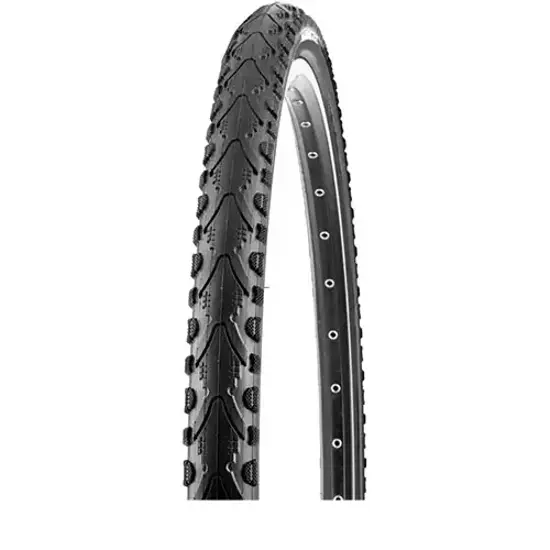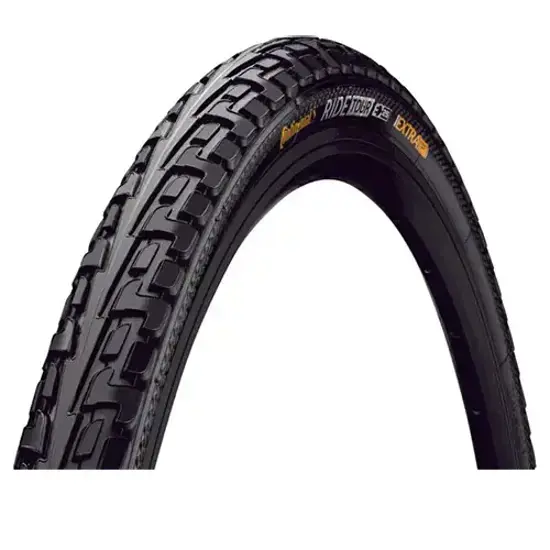12.5-inch bicycle tyres
Of course, you can also buy 12.5-inch bicycle tubes from us.
Adjust the filters, such as the tyre width or type of use, as required to find the right results.
-
Recommendation

![Schwalbe]() Bicycle tyresSchwalbe50-559 LAND CRUISER PLUS 26x2.00 Drahtreifen PUNCTUREGUARD GREEN COMPOUND Reflex Schwarz50-55926 inchFolding tyre23.02 €
Bicycle tyresSchwalbe50-559 LAND CRUISER PLUS 26x2.00 Drahtreifen PUNCTUREGUARD GREEN COMPOUND Reflex Schwarz50-55926 inchFolding tyre23.02 € -
Recommendation
![reTyre 50 559 Trail Rider NXT Faltreifen schwarz 15361531]()
![reTyre]() Bicycle tyresreTyre50-559 Trail Rider, NXT+ Faltreifen schwarz50-55926 inchFolding tyre25.72 €
Bicycle tyresreTyre50-559 Trail Rider, NXT+ Faltreifen schwarz50-55926 inchFolding tyre25.72 € -
Recommendation
![Vredestein 23 622 Fortezza Senso All Weather 700x23C AWS Black Faltreifen TPI 120 15230000]()
![Vredestein]() Bicycle tyresVredestein23-622 Fortezza Senso All Weather 700x23C23-62228 inchFolding tyre30.86 €
Bicycle tyresVredestein23-622 Fortezza Senso All Weather 700x23C23-62228 inchFolding tyre30.86 € -
Recommendation
![Goodyear 40 622 Connector TC 700x40C Faltreifen R_SHIELD DYNAMIC_SILICA4 Schwarz 15381214]()
![Goodyear]() Bicycle tyresGoodyear40-622 Connector TC 700x40C Faltreifen R:SHIELD DYNAMIC:SILICA4 Schwarz40-62228 inchFolding tyre41.66 €
Bicycle tyresGoodyear40-622 Connector TC 700x40C Faltreifen R:SHIELD DYNAMIC:SILICA4 Schwarz40-62228 inchFolding tyre41.66 € -
Unbelievable deals
![Kujo 23 622 KU 3001 Suzi S TPI 60 Drahtreifen schwarz 15328642]()
![Kujo]() Bicycle tyresKujo23-622, KU-3001 Suzi S, TPI 60, Clincher tyre, black23-62228 inchFolding tyre7.51 €
Bicycle tyresKujo23-622, KU-3001 Suzi S, TPI 60, Clincher tyre, black23-62228 inchFolding tyre7.51 € -
![Kenda 37 622 Khan K 935 28x140 Drahtreifen Schwarz 15244568]()
![Kenda]() Bicycle tyresKenda37-622 Khan K-935 700x35C black37-62228 inchFolding tyre8.33 €
Bicycle tyresKenda37-622 Khan K-935 700x35C black37-62228 inchFolding tyre8.33 € -
![Schwalbe 47 305 ROAD CRUISER 16x175 Drahtreifen K GUARD GREEN COMPOUND Schwarz 15326419]()
![Schwalbe]() Bicycle tyresSchwalbe47-305, ROAD CRUISER K-Guard, Active Line, Green Compound, EPI 50, Black47-30516 inchFolding tyre8.69 €
Bicycle tyresSchwalbe47-305, ROAD CRUISER K-Guard, Active Line, Green Compound, EPI 50, Black47-30516 inchFolding tyre8.69 € -
![Kenda 50 406 Krackpot K 907 20x195 Drahtreifen Gruen 15328546]()
![Kenda]() Bicycle tyresKenda50-406, K-907 Krackpot, TPI 22, Clincher tyre, Green50-40620 inchFolding tyre8.86 €
Bicycle tyresKenda50-406, K-907 Krackpot, TPI 22, Clincher tyre, Green50-40620 inchFolding tyre8.86 € -
![Kenda 50 406 Krackpot K 907 20x195 Drahtreifen Pink 15328549]()
![Kenda]() Bicycle tyresKenda50-406, K-907 Krackpot, TPI 22, Clincher tyre, pink50-40620 inchFolding tyre9.03 €
Bicycle tyresKenda50-406, K-907 Krackpot, TPI 22, Clincher tyre, pink50-40620 inchFolding tyre9.03 € -
![Continental 62 203 RIDE Tour ExtraPuncture Belt TPI 3 180 Drahtreifen Black 15229348]()
![Continental]() Bicycle tyresContinental62-203, RIDE Tour, ExtraPuncture Belt,TPI 3/180, Clincher tyre, Black62-20312 inchFolding tyre9.36 €
Bicycle tyresContinental62-203, RIDE Tour, ExtraPuncture Belt,TPI 3/180, Clincher tyre, Black62-20312 inchFolding tyre9.36 € -
![Continental 47 305 RIDE Tour ExtraPuncture Belt TPI 3 180 Drahtreifen Black 15228619]()
![Continental]() Bicycle tyresContinental47-305, RIDE Tour, ExtraPuncture Belt, TPI 3/180, Clincher tyre, Black47-30516 inchFolding tyre9.38 €
Bicycle tyresContinental47-305, RIDE Tour, ExtraPuncture Belt, TPI 3/180, Clincher tyre, Black47-30516 inchFolding tyre9.38 € -
![Schwalbe 37 288 ROAD CRUISER 14x1375 Drahtreifen K GUARD GREEN COMPOUND Schwarz 15362766]()
![Schwalbe]() Bicycle tyresSchwalbe37-288 ROAD CRUISER 14x1.375 Drahtreifen K-GUARD GREEN COMPOUND Schwarz37-28814 inchFolding tyre9.51 €
Bicycle tyresSchwalbe37-288 ROAD CRUISER 14x1.375 Drahtreifen K-GUARD GREEN COMPOUND Schwarz37-28814 inchFolding tyre9.51 €
12.5 inch bicycle tyres at a glance
12.5" bicycle tyres are specially designed for the smallest children's vehicles, such as balance bikes and children's bicycles. With a diameter of 12.5 inches, they offer a very low seat height and are ideal for children aged around two to three years who are gaining their first experience on two wheels. The compact size of these tyres provides extra stability and makes steering and balancing easier, which is important when learning to ride a bike.
12.5" bike tyres are often wider and have special tread patterns that provide good traction on a variety of surfaces. They offer grip and safety on tarmac, playgrounds or uneven terrain and are tough enough to withstand the rigours of intensive use. These tyres are also often puncture resistant or have special reinforcements to make them last longer and meet the needs of young beginners.
Well-known manufacturers of 12.5" bicycle tyres include Schwalbe, Kenda and CST. These brands have developed durable, high-quality tyres that are ideal for children's bikes. With these tyres, children can learn to ride safely and comfortably, while parents can rely on the quality and safety of the tyres.
Buy 12.5-inch bicycle tyres at great prices at reifen.com
In addition to 12.5-inch bicycle tyres, you will also find all standard sizes within our product range, at affordable prices. Our online shop relies exclusively on the high quality provided by a wide range of reputable bicycle tyre manufacturers.
Sizes & dimensions of bicycle tyres
3 different types of size specification are standard in Europe:
1. ETRTO
2. In inches
3. French abbreviation
ETRTO
This is the European tyre and rim standard (European Tire and Rim Technical Organization). The size specifications feature a two-digit number block and a three-digit number block, whereby the blocks are separated by a hyphen.
Example

Source: Wikipedia (Moebiusuibeom-en, Bicycle tire marks 02, CC BY-SA 3.0)
The first number block represents the tyre width in millimetres, therefore, in our example the tyre is 47 mm wide. The second number block represents the internal tyre diameter in millimetres, and therefore, in our example, the internal tyre diameter is 622 mm.
Size specification in inches
The classic tyre specification for bicycle tyres is in inches, with one inch corresponding to 25.4 mm. This system has the disadvantage that tyre manufacturers only state approximate values. Nonetheless, this tyre specification is still used to this day, as it has become deeply engrained into the mind of the layperson.
Here there are two ways the size specification in inches may be structured:
-
The size is specified by means of a two-digit number block and a decimal number with two decimal places. The number block is separated from the decimal number by an x (multiplication symbol)
Example

Source: Wikipedia (Moebiusuibeom-en, Bicycle tire marks 02, CC BY-SA 3.0)
The two-digit number block states the approximate external tyre diameter, i.e. 28 inches in our example. The tyre width is specified by the decimal number. In this example, this is 1.75 inches.
Schwalbe explains why the use of inches to specify the size can prove problematic. Here it states:
"The specifications in inches are neither precise nor clear. For example, diameters of 559 mm (MTB), 571 mm (Triathlon) and 590 mm (Dutch touring bikes) are all designated as 26-inch tyres. Tyres with diameters of 622 and 635 mm are both referred to as 28-inch tyres. Curiously, tyres with an internal diameter of 630 mm are referred to as 27-inch tyres. These designations find their origin - and their meaning - in the era of the plunger brake. At that time, the exact external diameter of the wheel was determined by the brake. Depending on the tyre width, there were then different standards for the internal diameter."
- Here the size is again specified by means of a two-digit number block, however, the tyre width is not stated using a decimal number, but rather a fraction.
French abbreviation
Here the tyre size is specified by means of a three-digit number block, followed by an x (multiplication symbol) and a two-digit number block, which is combined with a letter.
Example

Source: Wikipedia (Moebiusuibeom-en, Bicycle tire marks 02, CC BY-SA 3.0)
The external tyre diameter in millimetres is stated via the three-digit number block, i.e. 700 mm in our example, while the two-digit number block defines the tyre width in millimetres, i.e. 45 mm in the example. What is unique about the French short designation is the letter - this actually states the tyre height, whereby an A stands for a tyre height of approx. 30 mm, a B for a tyre height of 33 mm and a C for a tyre height of approx. 39 mm.
How do you find the right tyres?
The simplest way is probably to read the tyre height on the side of the existing tyre, and to buy a tyre in exactly the same size. If the size specification is no longer legible, you can search for the most suitable version using the ETRTO, as the internal tyre diameter does not change. On the other hand, the external tyre diameter - the size from the size specification in inches and as found in the French size specification, very likely may change on account of differing tyre heights.
 Germany
Germany





















